Fine 18th Century English Terrestrial Pocket Globe by Cary, London, 1791
Sold
Request Information
Follow Us
Fine 18th Century English Terrestrial Pocket Globe by Cary, London, 1791
Cary’s Pocket globe, agreeable to the latest discoveries, London: J&W Cary, Strand, April 1791
A rare 3 inch diameter example of Cary’s pocket globe in a superb green shagreen-covered case with two silvered hook and eye clasps. The terrestrial globe, itself 3 inches in diameter, covered with copper-engraved hand-coloured gores applied to a plaster and papier maché sphere, the case lined on one half with a map entitled “The World as it was known in Cæsar’s time agreable to D’Anville”, on the other half with “A Table of Latitudes and Longitudes of Places not given on this Globe”. The outer circumference of the spherical case is banded in a silvered metal.
All three voyages of Captain James Cook are marked on the globe, suggesting both the public and Cary’s fascination with these feats of maritime endeavour.
Voyage One. HMS Endeavour, 1768-71. Cook was instructed to undertake a scientific voyage to the Pacific Ocean. He set sail rounding Cape Horn before making landfall in Tahiti, circumnavigating New Zealand, moving up the East Coast of Australia and finally to Indonesia. The newly discovered Endeavour Strait is marked on the globe between Australia and Prince of Wales Island.
Voyage Two. HMS Resolution and HMS Adventure, 1772-75. Cook was commissioned by the Royal Society to sail south in search of the hypothetical Terra Australis. In doing so, Cook became one of the first known explorers to cross the Antarctic Circle. Cook turned to restock in Tahiti just before sighting mainland Antarctica. Terra Australis was not sighted but, having visited New Zealand, the South Sandwich Islands (‘Sandwich Land’ on this globe) were discovered and named.
Voyage Three. HMS Resolution and Discovery, 1776-79. The official public reason for the voyage was to return a pacific islander, from the second voyage, to Tahiti. In reality, the voyage’s principal purpose was to navigate the Northwest passage. Following a stop in Tahiti, Cook made formal contact with Hawaii, before heading north towards the supposed Northwest Passage. While Cook was ultimately unsuccessful in locating the passage, he became the first to chart the majority of America’s Northwestern coast line.
Cook returned to Hawaii where he had previously stopped en route to America. Following an ill-fated encounter with Hawaiians and an argument over ship repairs, Cook and some of his men were killed. This is commemorated on the globe with the inscription ‘Owhyee where Cook was killed 1779’.
The globe also shows the 1780 return journey of the expedition albeit under the command of John Gore and Captain James King. Cook is not the only explorer to be commemorated: amongst other Mackenzie’s 1789 explorations in north-western Canada, showing ‘Mackenzie’s R[iver]’, a decade before Mackenzie’s own maps were published in 1801.
About the makers:
The notable and much celebrated Cary family of cartographers and globe makers were responsible for some of the finest known globes of the period. Having served a seven year engraving apprenticeship under William Palmer, the firm itself was started in London in the late 18th century by John Cary (1755 – 1835) and located at 181 Strand. In producing globes, John often worked in partnership with his younger brother William Cary (c. 1760 – 1825), a scientific instrument maker. This led to the firm being commonly known as J & W Cary. John is widely regarded as the most influential private map maker of his generation. Both John and William also produced maps and other instruments in addition to their globes. Evidence suggests that it was only the globes that were produced jointly.
The first globes by Cary were advertised in the ‘Traveller’s Companion’ in January 1791. The advertisement mentions that differing sizes of terrestrial globes, including a 3 ½ inch, were available and made from ‘entire new plates’. This was seen as particularly noteworthy – the copper plates for the gores were expensive to produce and often used repeatedly through generations.
Condition
Good. Wear consistent with age and use. Globe and hemispheres good with wear commensurate with age. Case good with the usual wear.
Dimensions
Height: 3in. (7.62 cm)
Diameter: 3 in. (7.62 cm)
Literature
Oxford Dictionary of National Biographies
Dahl, Edward H., ‘Sphaerae Mundi’, p.96; Dekker, Elly, ‘Globes at Greenwich’, 1999, pp. 293-295;
van der Krogt, Peter, ‘Old Globes in the Netherlands’, 1984, p,96.
PREVIOUSLY SOLD
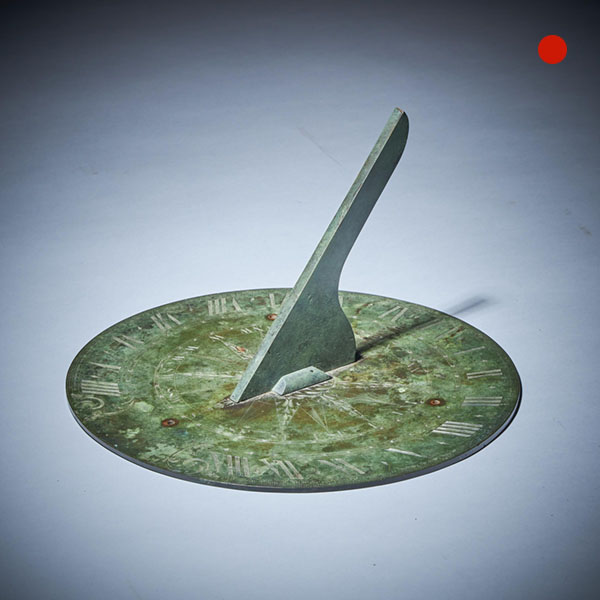
18th Century George III 12″ Bronze Sundial by Watkins & Smith London Circa 1760
18th Century George III 12" Bronze Sundial by Watkins & Smith London Circa 1760 SoldFollow Us18th Century George III 12" Bronze Sundial by Watkins & Smith London Circa 1760 A beautifully patinated 12" George III bronze sundial by...
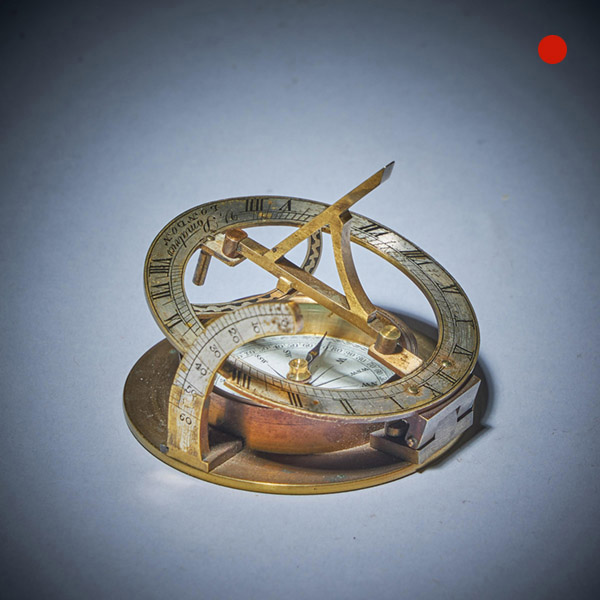
19th Century Equinoctial Pocket Sundial in Original Case, signed V. Simalvico
19th Century Equinoctial Pocket Sundial in Original Case, signed V. Simalvico SoldFollow Us19th Century Equinoctial Pocket Sundial in Original Case, signed V. Simalvico A Fine and Rare Early 19th Century Equinoctial Pocket Sundial in Original...
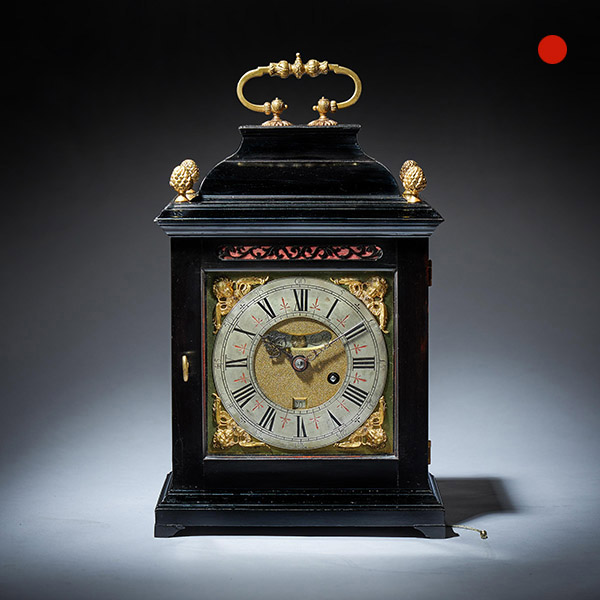
17th Century William and Mary Eight-Day Spring-Driven Table Clock, Circa 1695
17th Century William and Mary Eight-Day Spring-Driven Table Clock, Circa 1695 SoldFollow Us17th Century William and Mary Eight-Day Spring-Driven Table Clock, Circa 1695 An early English eight-day spring-driven table clock signed Henry Massy...
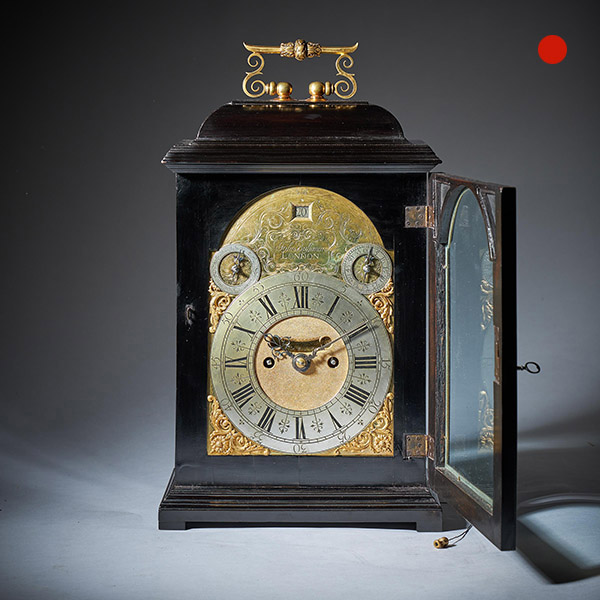
18th Century George I Eight-Day Ebony Table Clock with Pull Repeat by Bushman
18th Century George I Eight-Day Ebony Table Clock with Pull Repeat by Bushman Sold Follow Us18th Century George I Eight-Day Ebony Table Clock with Pull Repeat by Bushman This great early arched spring clock has a 7-inch dial with unusual...
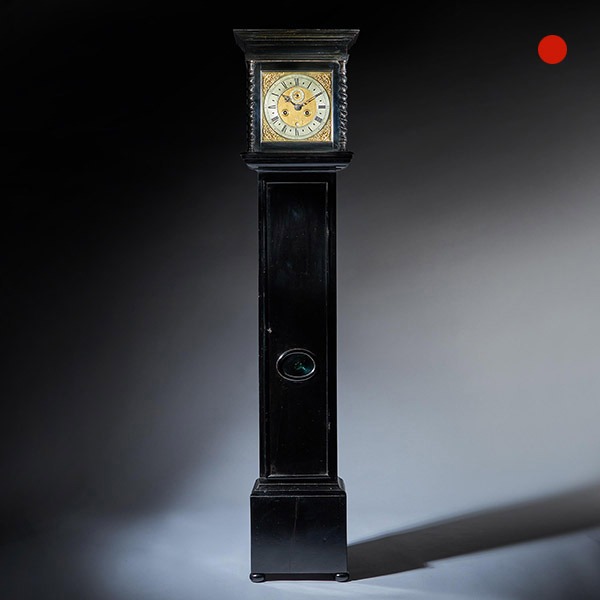
Rare 17th Century William and Mary 10-Inch Ebonised Longcase/Grandfather Clock
Rare 17th Century William and Mary 10-Inch Ebonised Longcase/Grandfather Clock SoldFollow UsRare 17th Century William and Mary 10 Inch Ebonised Longcase/Grandfather Clock A rare, early English eight-day longcase clock signed on the chapter...
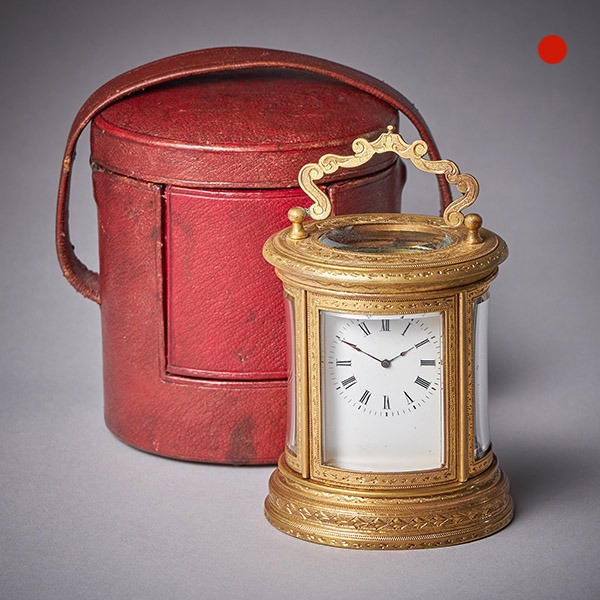
19th Century Eight-Day Miniature Gilt-Brass Carriage Clock with Original Case
19th Century Eight-Day Miniature Gilt-Brass Carriage Clock with Original Case SoldFollow Us19th Century Eight-Day Miniature Gilt-Brass Carriage Clock with Original Case A charming late 19th century French engraved miniature oval carriage...

18th Century George III 12″ Bronze Sundial by Watkins & Smith London Circa 1760
18th Century George III 12" Bronze Sundial by Watkins & Smith London Circa 1760 SoldFollow Us18th Century George III 12" Bronze Sundial by Watkins & Smith London Circa 1760 A beautifully patinated 12" George III bronze sundial by...

19th Century Equinoctial Pocket Sundial in Original Case, signed V. Simalvico
19th Century Equinoctial Pocket Sundial in Original Case, signed V. Simalvico SoldFollow Us19th Century Equinoctial Pocket Sundial in Original Case, signed V. Simalvico A Fine and Rare Early 19th Century Equinoctial Pocket Sundial in Original...

17th Century William and Mary Eight-Day Spring-Driven Table Clock, Circa 1695
17th Century William and Mary Eight-Day Spring-Driven Table Clock, Circa 1695 SoldFollow Us17th Century William and Mary Eight-Day Spring-Driven Table Clock, Circa 1695 An early English eight-day spring-driven table clock signed Henry Massy...

18th Century George I Eight-Day Ebony Table Clock with Pull Repeat by Bushman
18th Century George I Eight-Day Ebony Table Clock with Pull Repeat by Bushman Sold Follow Us18th Century George I Eight-Day Ebony Table Clock with Pull Repeat by Bushman This great early arched spring clock has a 7-inch dial with unusual...

Rare 17th Century William and Mary 10-Inch Ebonised Longcase/Grandfather Clock
Rare 17th Century William and Mary 10-Inch Ebonised Longcase/Grandfather Clock SoldFollow UsRare 17th Century William and Mary 10 Inch Ebonised Longcase/Grandfather Clock A rare, early English eight-day longcase clock signed on the chapter...

19th Century Eight-Day Miniature Gilt-Brass Carriage Clock with Original Case
19th Century Eight-Day Miniature Gilt-Brass Carriage Clock with Original Case SoldFollow Us19th Century Eight-Day Miniature Gilt-Brass Carriage Clock with Original Case A charming late 19th century French engraved miniature oval carriage...
YOU MAY ALSO LIKE
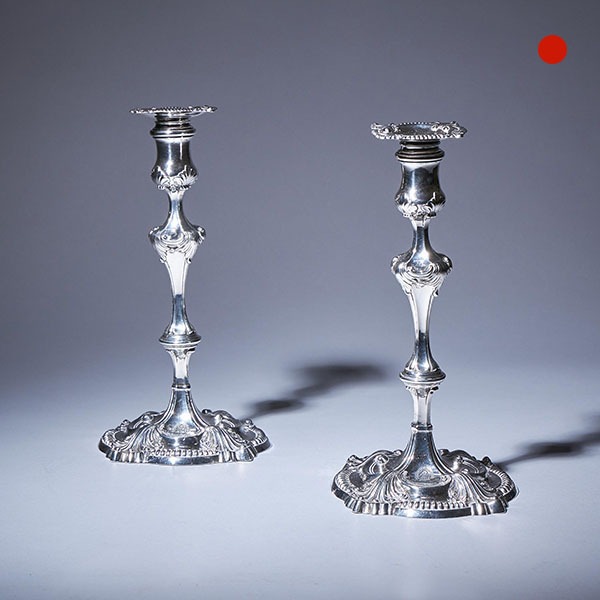
Pair of 18th Century George III Silver Candlesticks by David Bell, London, 1762
Pair of 18th Century George III Silver Candlesticks by David Bell, London, 1762 Sold[wpforms_selector form_id="11387" show_title="on" _builder_version="4.22.1" _module_preset="default" custom_margin="-30px||||false|false"...
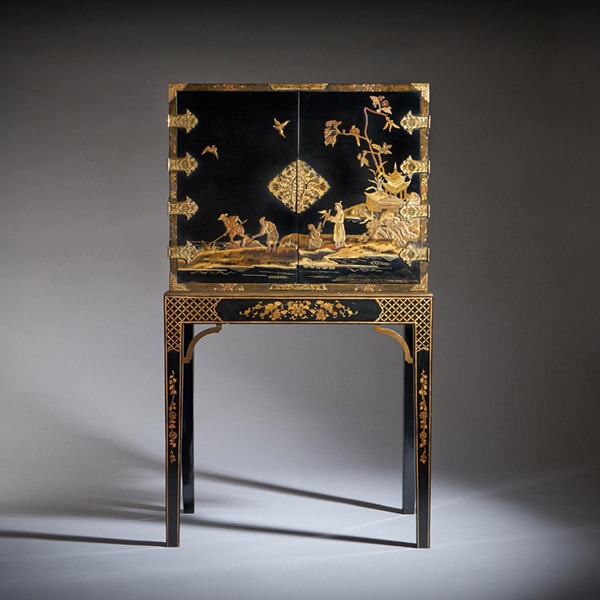
A Rare and Fine George III 18th Century Chinoiserie Lacquer Cabinet on Stand
A Rare and Fine George III 18th Century Chinoiserie Lacquer Cabinet on Stand £28,000Follow UsA...
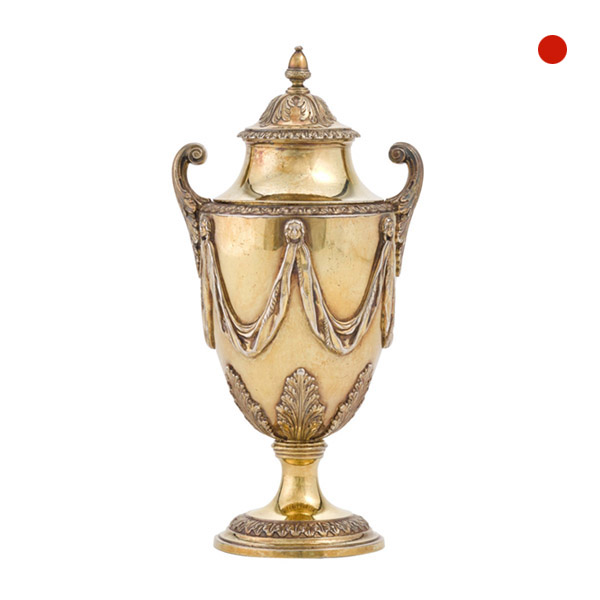
Robert Adam George III Silver Gilt Vase by Daniel Smith and Robert Sharp London
Robert Adam George III Silver Gilt Vase by Daniel Smith and Robert Sharp London Sold[wpforms_selector form_id="11387" show_title="on" _builder_version="4.22.1" _module_preset="default" custom_margin="-30px||||false|false"...
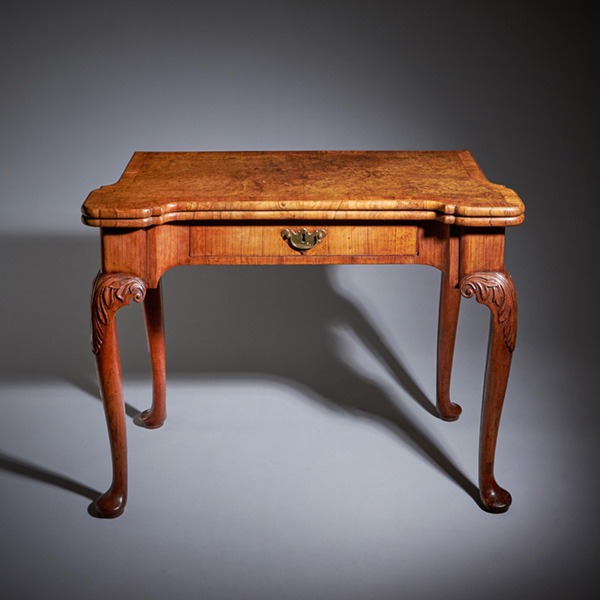
An Elegant and Rare George II Pollard Oak and Walnut Card Table, Circa 1740
An Elegant and Rare George II Pollard Oak and Walnut Card Table, Circa 1740 £15,900Follow UsAn...
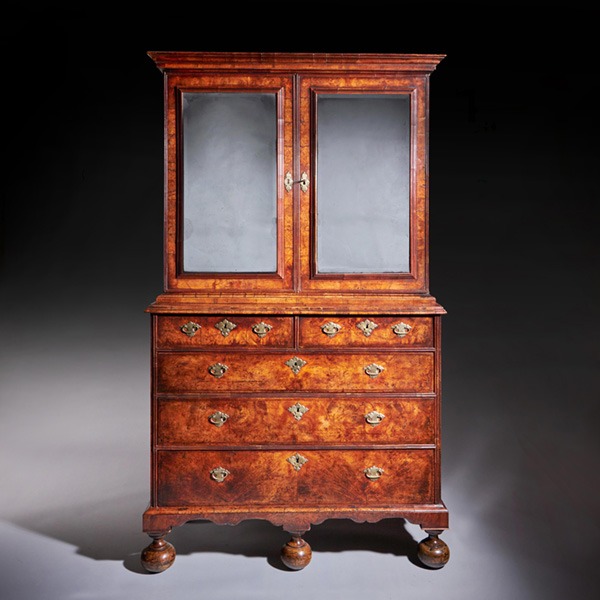
18th Century Queen Anne Burr Walnut mirrored Cabinet on Chest, Circa 1705-1715
18th Century Queen Anne Burr Walnut mirrored Cabinet on Chest, Circa 1705-1715 £32,900Follow...
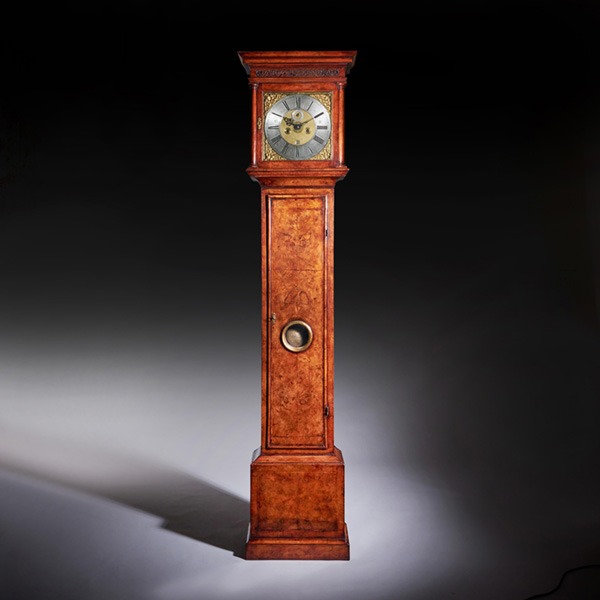
Fine 18th Century Queen Anne Burr Walnut Eight-Day Longcase Clock
Fine 18th Century Queen Anne Burr Walnut Eight-Day Longcase Clock £12,500Follow UsFine 18th...

Pair of 18th Century George III Silver Candlesticks by David Bell, London, 1762
Pair of 18th Century George III Silver Candlesticks by David Bell, London, 1762 Sold[wpforms_selector form_id="11387" show_title="on" _builder_version="4.22.1" _module_preset="default" custom_margin="-30px||||false|false"...

A Rare and Fine George III 18th Century Chinoiserie Lacquer Cabinet on Stand
A Rare and Fine George III 18th Century Chinoiserie Lacquer Cabinet on Stand £28,000Follow UsA...

Robert Adam George III Silver Gilt Vase by Daniel Smith and Robert Sharp London
Robert Adam George III Silver Gilt Vase by Daniel Smith and Robert Sharp London Sold[wpforms_selector form_id="11387" show_title="on" _builder_version="4.22.1" _module_preset="default" custom_margin="-30px||||false|false"...

An Elegant and Rare George II Pollard Oak and Walnut Card Table, Circa 1740
An Elegant and Rare George II Pollard Oak and Walnut Card Table, Circa 1740 £15,900Follow UsAn...

18th Century Queen Anne Burr Walnut mirrored Cabinet on Chest, Circa 1705-1715
18th Century Queen Anne Burr Walnut mirrored Cabinet on Chest, Circa 1705-1715 £32,900Follow...

Fine 18th Century Queen Anne Burr Walnut Eight-Day Longcase Clock
Fine 18th Century Queen Anne Burr Walnut Eight-Day Longcase Clock £12,500Follow UsFine 18th...








